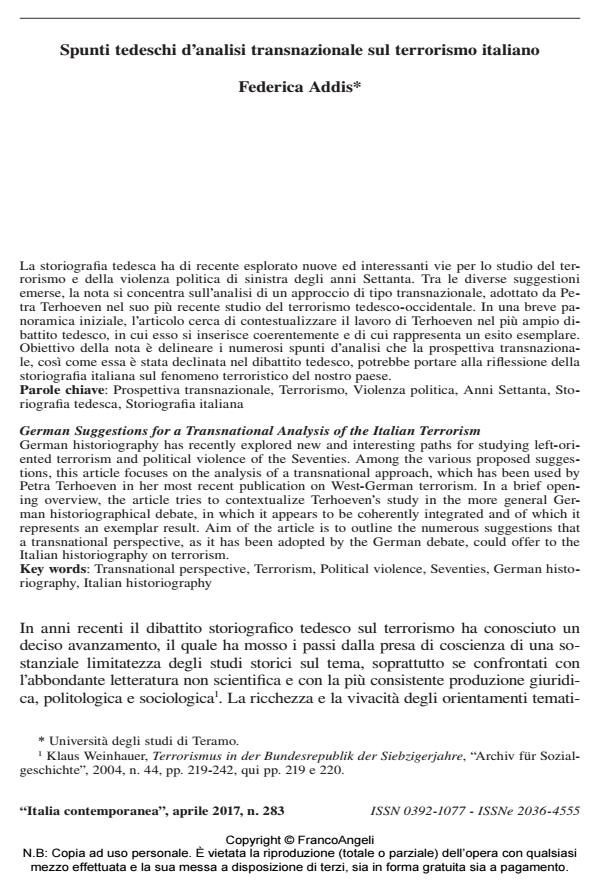German Suggestions for a Transnational Analysis of the Italian Terrorism
Journal title ITALIA CONTEMPORANEA
Author/s Federica Addis
Publishing Year 2017 Issue 2017/283
Language Italian Pages 13 P. 183-195 File size 132 KB
DOI 10.3280/IC2017-283007
DOI is like a bar code for intellectual property: to have more infomation
click here
Below, you can see the article first page
If you want to buy this article in PDF format, you can do it, following the instructions to buy download credits

FrancoAngeli is member of Publishers International Linking Association, Inc (PILA), a not-for-profit association which run the CrossRef service enabling links to and from online scholarly content.
German historiography has recently explored new and interesting paths for studying left-oriented terrorism and political violence of the Seventies. Among the various proposed suggestions, this article focuses on the analysis of a transnational approach, which has been used by Petra Terhoeven in her most recent publication on West-German terrorism. In a brief opening overview, the article tries to contextualize Terhoeven’s study in the more general German historiographical debate, in which it appears to be coherently integrated and of which it represents an exemplar result. Aim of the article is to outline the numerous suggestions that a transnational perspective, as it has been adopted by the German debate, could offer to the Italian historiography on terrorism.
Keywords: Transnational perspective, Terrorism, Political violence, Seventies, German historiography, Italian historiography
Federica Addis, Spunti tedeschi d’analisi transnazionale sul terrorismo italiano in "ITALIA CONTEMPORANEA" 283/2017, pp 183-195, DOI: 10.3280/IC2017-283007